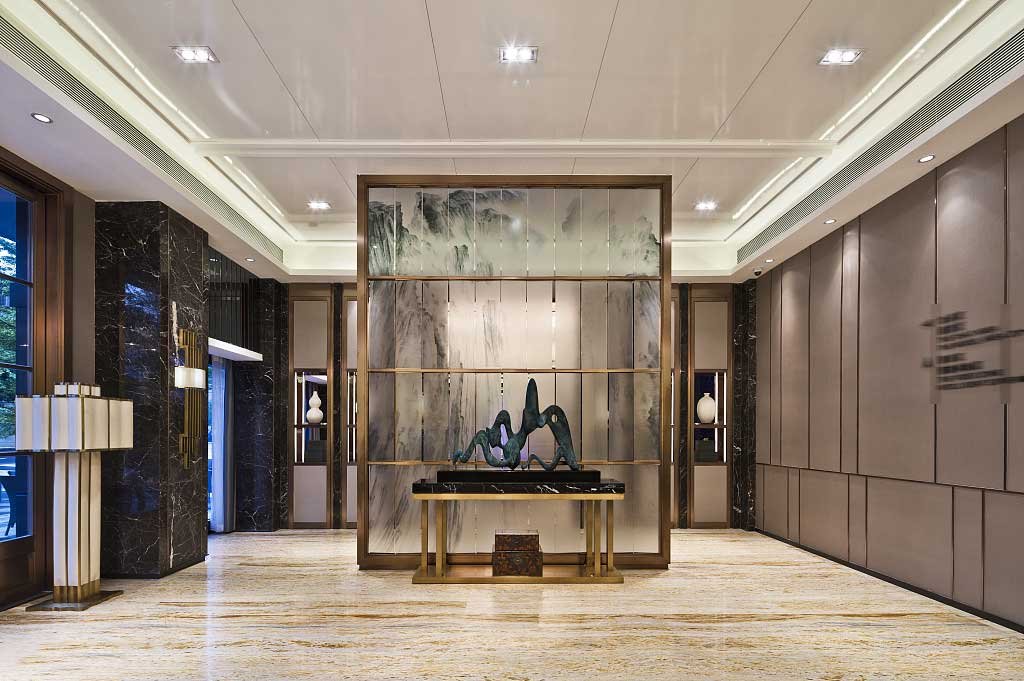Spatial Understanding of Stainless Steel Sculpture
Table of Contents
Every element in nature, whether it be a stone, soil, or metal, inherently occupies a specific three-dimensional space. Sculpture, in essence, is the manifestation of a spiritual image through material, taking up space as a physical entity. From a spatial perspective, traditional sculpture represents a form of independent physical imagery. It manifests an outwardly extending structural form that conveys a sense of internal to external elastic tension. Achieving a pronounced sense of scale is a primary objective in such sculptures.

Modern sculpture, however, introduces a revolutionary spatial concept. It challenges the conventional notions of gravity and volume, asserting that sculpture should be perceived more as a spatial entity rather than a volumetric one. This contemporary viewpoint redefines sculpture, no longer viewing it as a solid, unbroken mass that adheres to traditional volumetric forms. Instead, it embraces an array of spatial compositions, featuring diverse combinations and structures. This shift has paved the way for metals, especially stainless steel, to gradually evolve into a distinct form of sculptural art, increasingly visible in various settings.
The innovative spatial concepts in modern stainless steel sculpture encompass several key forms.



Exploration of Inner Space & Virtual Space
Within the classical framework of sculpture, the art form has traditionally been perceived as a tangible entity, endeavoring to command as much physical space as possible. However, the exploration of spatial and void elements in sculpture has radically transformed this traditional space concept, presenting sculpture in an entirely new light. Metals, due to their diverse textures and the flexibility they offer in processing, have become a preferred medium for artists seeking to boldly and freely explore these spatial dimensions. This attribute positions metal as a material of choice for contemporary sculptors.

Pefsnay, a renowned constructivist sculptor, has consistently employed space as his primary mode of artistic expression. His aspiration is to use space as the optimal conduit for sculptural art. However, his interpretation of this spatial medium is conveyed through minimalistic spatial sensations, utilizing only lines and barely perceptible surfaces. Pefsnay skillfully manipulates metal sheets and strips as his primary materials. By intricately arranging and weaving these materials into physical space, he creates a complex interplay of surfaces and lines. This clever fusion allows his sculptures to both define the space they occupy and interact with the space around them. Through this method, Pefsnay articulates his profound understanding of both space and the concept of the void within his sculptures’ forms, thereby redefining the traditional boundaries of sculptural art with a focus on spatial dynamics.
Negation of the Block & Volume
Alberto Giacometti stands as a quintessential artist who delved into the exploration of space in his art in a distinctive manner. His sculptures diverge significantly from the expressive realism typically associated with the expressionist style, yet they powerfully convey a sense of deep internal turmoil. His figures, characterized by their elongated forms and appearing as if weathered with pits and grooves, exude a sense of roughness, rigidity, and deformation. These figures are enveloped in an aura of solitude and coldness, breaking away entirely from the confines of realistic portrayal.

Giacometti’s works transcend mere representations of real-life figures; they embody the artist’s personal perceptions and interpretations of the world around him. Themes of indifference, solitude, discrimination, alienation, and a stark, sobering sense of despair reflective of that particular era are prevalent in his work. He was acutely aware of the irreversible and unavoidable nature of these societal conditions. The impact of his sculptures on the concept of space is profound, echoing the philosophical underpinnings of Existentialism while challenging and overturning traditional notions of mass and volume. Giacometti’s artistic expression thus becomes a medium for exploring deeper existential questions, using the spatial dynamics of his sculptures to reflect on the human condition and the complex relationships between individuals and the spaces they inhabit.
Expansion of the Concept of Space-activity Sculpture
Caulder, renowned for his dynamic approach to sculpture, has revolutionized the art form by transitioning it into an “Active stage”. The incorporation of motion breathes new life into sculptures, introducing novel forms of spatial existence. This dynamic aspect enhances the spatial ambiance of the sculptures, making them appear more objective, elegant, and detached compared to their static counterparts. The use of metal, particularly as the preferred material for dynamic sculptures, lends an ethereal and translucent quality to the artworks, enriching their expressive power.

Modern stainless steel sculpture represents a radical departure from traditional sculptural concepts. The integration of metal materials and innovative processing techniques has not only transformed conventional artistic paradigms but also altered people’s traditional perceptions. It has subverted and redefined the conventional notions of form, material, and space in sculpture, propelling the formalist aesthetics of modernist art to its pinnacle.

However, this evolution did not halt there. From the 1980s onwards, stainless steel sculpture entered the realm of postmodernism, where the relationships between various artistic styles became increasingly blurred, leading to a sense of uncertainty. The one consistent principle in this ever-evolving field is humanity’s unceasing quest for truth. Through continuous self-reflection and improvement, the art of modern stainless steel sculpture is poised to embark on a new journey, exploring uncharted territories and pushing the boundaries of artistic expression. This ongoing evolution underscores the adaptability and resilience of stainless steel sculpture as it navigates the shifting landscapes of modern and postmodern art.
You Might Also Like
Please Share This
Recent Posts
- The Art and Impact of Stainless Steel and Large Metal Outdoor Sculptures
- Elegant and Durable L-Shaped Metal Trims for Modern Interiors
- Transforming Interiors with Modern Metal Ceiling Designs
- Laser Cut Decorative Panels: Transforming Spaces with Precision
- Metal Pergolas – The Modern Outdoor Pavilion Solution



